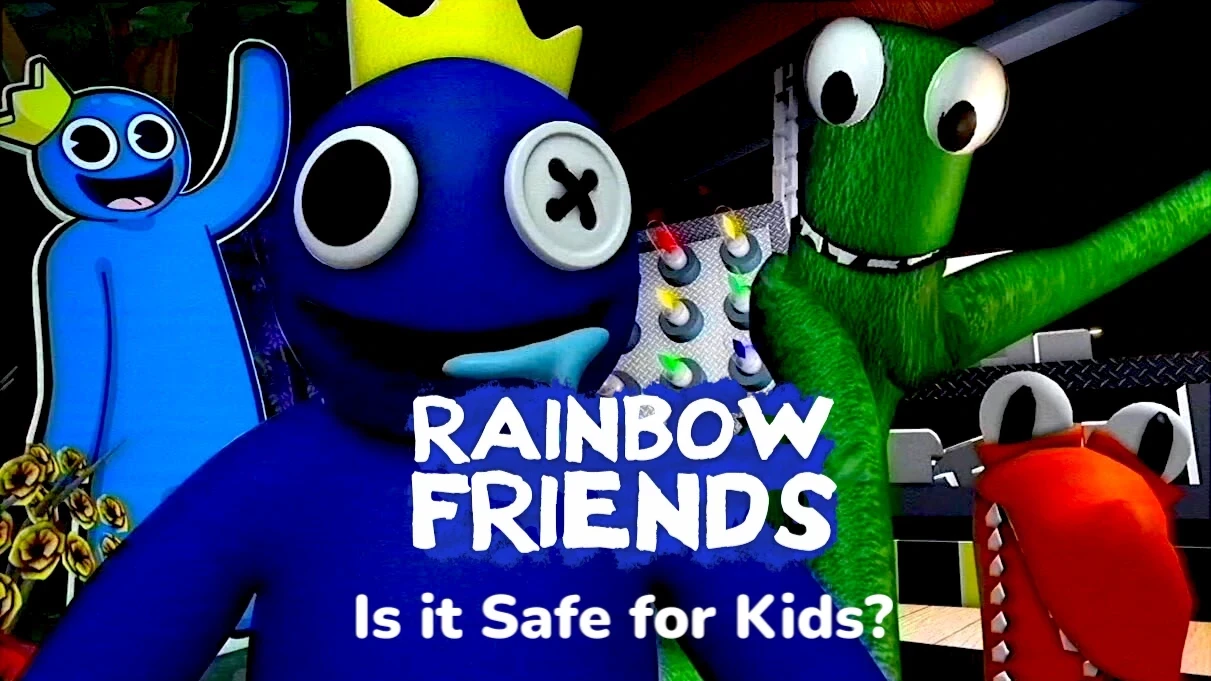
Rainbow Friends Safe for Kids? Parent's Guide
In today's digital age, children are increasingly drawn to interactive games that captivate their imagination and provide endless entertainment. One such game that has gained substantial popularity among young audiences is Rainbow Friends. As parents, understanding the safety and impact of these games on your child's development is crucial. This guide delves into the world of Rainbow Friends, exploring its origins, characters, safety assessments, and expert opinions to help you make informed decisions about your child's gaming habits.
What is Rainbow Friends: The History of Its Creation and Popularity
Rainbow Friends is an engaging multiplayer online game that has taken the gaming community by storm, especially among children and pre-teens. Developed by a team of passionate game designers, the game was first released in 2022 year, quickly garnering a dedicated fan base due to its vibrant visuals and interactive gameplay.
The game's premise revolves around a group of colorful characters, each embodying a distinct personality and set of abilities. Players navigate through various chapters, including Rainbow Friends Chapter 2 and Rainbow Friends Chapter 3, each introducing new challenges and storylines that keep the gameplay fresh and exciting. The combination of cooperative missions and competitive elements has contributed to its widespread appeal, making it a staple in many children's gaming routines.
Rainbow Friends Characters: A Brief Overview for Parents
One of the standout features of Rainbow Friends is its diverse cast of characters, each representing a different color of the rainbow. These characters not only add visual appeal but also enhance the storytelling and gameplay experience.
In the world of Rainbow Friends, children meet a variety of characters, each with their own unique abilities and characteristics:
- Blue Rainbow Friends: He is one of the most famous characters who may seem humorous on the surface, but his sudden appearances and aggressive behavior can create a sense of anxiety in children.
- Green Rainbow Friends: A character with long tentacles and unpredictable movements that often chase the player. Its intrusiveness can cause increased tension and fear, especially in younger audiences.
- Orange Rainbow Friends: A lizard-like creature characterized by great speed and the ability to attack instantly. The unexpectedness of its appearance can be quite stressful for children.
- Purple Rainbow Friends: A mysterious character who usually appears in dark and dimly lit corners and creates an atmosphere of uncertainty. For children, this can be a source of anxiety because of the uncertainty of his next actions.
- Yellow Rainbow Friends: A character characterized by sudden, unexpected attacks. The speed and unpredictability of his actions can cause children to feel panic or stress.
- Cyan Rainbow Friends: He rarely appears, but his unexpected actions can instantly activate emotions. Even rare encounters with this character have the potential to increase the tension during the game.
- Scientist: A character resembling an eccentric scientist. His cold-blooded and calculated approach in pursuit of players can increase the sense of danger and incomprehensibility of the situation during the game.
Understanding these characters is essential for both enjoying the game and assessing its suitability for your child.
Assessment of Rainbow Friends Content Safety: Age Recommendations, Potential Risks, Positive Value
When evaluating whether Rainbow Friends is safe for your child, it's important to consider several factors, including age recommendations, potential risks, and the positive values the game may impart.
Age Recommendations
Rainbow Friends is generally recommended for children aged 7 and above. The game is designed to be user-friendly for younger audiences, while still offering depth and complexity for older players. However, parents should always consider their child's maturity level and gaming experience when determining appropriateness.
Potential Risks
- Screen Time: Excessive gaming can lead to increased screen time, which is associated with various health concerns, including eye strain, poor posture, and disrupted sleep patterns.
- Online Interactions: As a multiplayer game, Rainbow Friends allows for interaction with other players. This can expose children to inappropriate language, cyberbullying, or unwanted contact with strangers.
- In-App Purchases: The game may offer in-app purchases, which can lead to unintended expenses if not properly monitored.
Positive Value
Despite potential risks, Rainbow Friends also offers several positive benefits:
- Social Skills: Playing multiplayer games can enhance teamwork, communication, and collaboration skills.
- Problem-Solving: The game's challenges encourage critical thinking and strategic planning.
- Creativity: The diverse characters and engaging storylines can spark creativity and imagination in children.
My Kid Plays Rainbow Friends a Lot: What Should I Do?
If you find that your child is spending a significant amount of time playing Rainbow Friends, it's essential to take proactive steps to ensure their well-being.
Monitor Screen Time
Establish clear guidelines for how much time your child can spend on gaming each day. The American Academy of Pediatrics recommends limiting recreational screen time to one hour per day for children aged 6 and older.
Set Parental Controls
Utilizing parental control software can help manage and monitor your child's gaming activities. Programs like Kroha offer robust features that allow you to set time limits, block inappropriate content, and monitor in-game interactions. By setting parental control, you can ensure your child enjoys a safe and balanced gaming experience.
Encourage Other Activities
Promote a balanced lifestyle by encouraging your child to engage in various activities, such as outdoor play, reading, and hobbies that do not involve screens. This helps prevent excessive gaming and supports overall development.
Communicate Openly
Maintain an open dialogue with your child about their gaming experiences. Discuss the importance of balancing gaming with other responsibilities and activities, and address any concerns they may have about the game.
Should My Kid Play It? Expert Opinion
Experts generally agree that gaming can be both beneficial and potentially harmful, depending on how it is managed. According to Dr. Jane Smith, a child psychologist, "Games like Rainbow Friends can foster valuable skills such as teamwork and problem-solving. However, it's crucial for parents to oversee their child's gaming habits to prevent negative outcomes such as excessive screen time and exposure to inappropriate content."
Additionally, the American Academy of Pediatrics emphasizes the importance of setting boundaries and encouraging balanced activities to ensure that gaming remains a positive aspect of a child's life.
Incorporating expert guidance, it's clear that Rainbow Friends can be safe for children when proper measures are in place. Parents should stay informed, utilize available tools like Kroha for parental control, and maintain active involvement in their child's gaming journey.
Conclusion
Rainbow Friends offers an engaging and colorful gaming experience that many children enjoy. By understanding the game's nature, assessing its safety, and implementing effective parental controls, you can ensure that your child interacts with this popular game in a healthy and balanced manner. Always remember that open communication and active monitoring are key to fostering a positive gaming environment for your child.
Recent articles
Google Gemini for children under 13
In today’s digital age, the topic of artificial intelligence in education has grown increasingly important. With new tools emerging almost every day, many parents are concerned about the safety and appropriateness of AI for their children, especially those under the age of 13. One of the prominent AI products making headlines is Google Gemini—a tool designed to function as a smart assistant in everyday life as well as in educational settings. As the use of modern technology in education becomes more widespread, it is crucial for parents to understand both the benefits and risks associated with Google Gemini. This article aims to provide an expert, trustworthy guide for parents, enriched with real-life examples and practical insights, on how to navigate safe internet usage and maintain digital safety when children interact with Google Gemini.
Amino App: What Should Parents Know?
In today's digital age, social networks play a significant role in the lives of children and teenagers. Among the myriad of platforms available, Amino App has gained substantial popularity among the younger audience. But what exactly is Amino, and is it safe for children? This article delves into the features of Amino, its appeal to youth, potential risks, and the measures parents can take to ensure their children's safety while using this platform.

